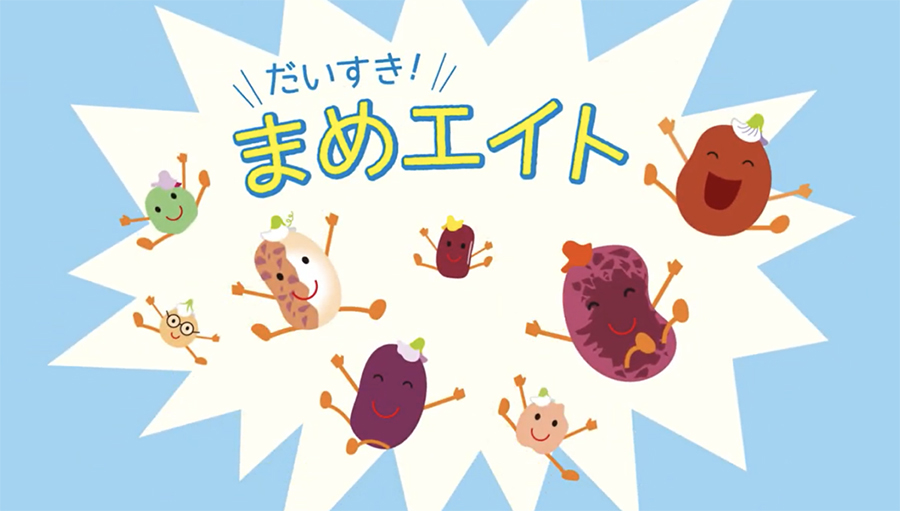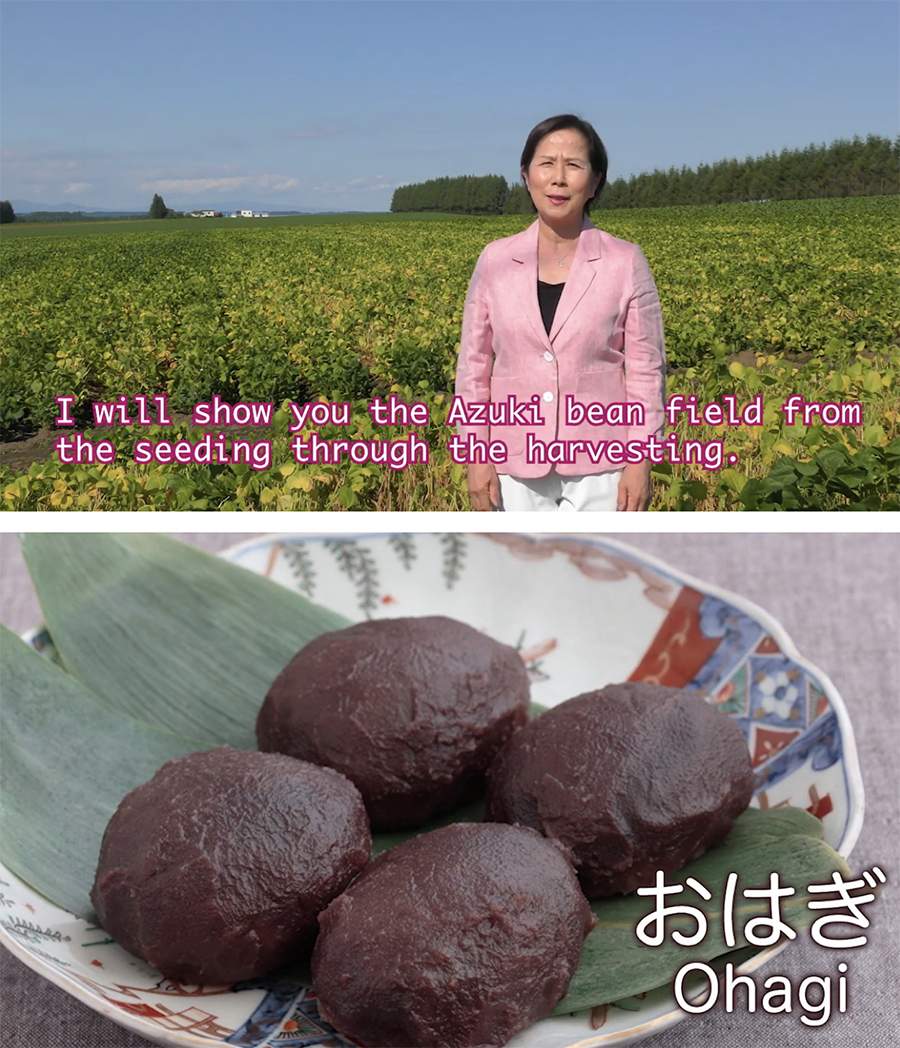August 25, 2020
The Japan Pulse Foundation is counting on these animated pulses to instill healthy eating habits in Japan’s young children.


Meet the Mame Eight, a friendly cast of superfood cartoon characters that use their superpowers to keep children healthy, fit and strong. There’s Torakun the Tora Bean, Adzuchan the Adzuki Bean, Enkun the Green Pea, Kinsan the Kintoki Bean, Lenkun the Lentil, Hanachan the Scarlet Runner Bean, Hiyorin the Chickpea and Soraran the Broad Bean. Together, they have been sent on a mission by the Japan Pulse Foundation to visit kindergarten and nursery school classrooms and alert young children about the benefits of pulse consumption.
It is no small feat. In Japan, overall pulse consumption has been trending downward in recent years. Statistics from the Japan Pea and Bean Importers Association indicate that in 2019 Japan’s domestic consumption of all beans and peas amounted to 143,100 MT, down from 247,100 MT in 1988. In 2007, per capita pulse consumption was estimated at 5 grams per day, well below the global average of 21 grams per day.
“The primary reason for this is that in Japan beans are mainly used to make bean paste for traditional Japanese confectionaries, but people here are adapting more western foods,” explains Kunichiro Amakasu of Amakasu Trading, a member of the Japan Pea and Bean Importers Association and a supporting member of the Japan Pulse Foundation, as well as a GPC Executive Board member.
With an eye towards the future, the Japan Pulse Foundation, an industry group that counts the Japan Pea and Bean Importers Association as a member, launched a campaign focused on the next generation of food shoppers—the nation’s children.
“There isn’t any data on pulse consumption among children, but we know most kids don’t like them,” says Amakasu. “The only pulse-based food that is popular with children is the Icebar, a kind of popsicle made with adzuki beans.”
To change that, the Japan Pulse Foundation debuted the Mame Eight in comic book form during the International Year of Pulses in 2016. Amakasu reports that 2,000 comic books were distributed to kindergartens and nursery schools throughout the country. The adventures of the Mame Eight were well received and the Japan Pulse Foundation decided to follow up with an animated video, which was released this past March.
In the video, the Mame Eight introduce children to a wide variety of delicious pulse dishes, from veggie burgers and croquettes, to soups and curries, to pasta and pancakes. Pulses, they tell their young friends, provide the nutrition they need for strong bones, powerful muscles, healthy digestion and shiny hair. As they say their goodbyes, they encourage the children to eat pulses in order to grow big and maintain good health.

In addition to the focus on children, the Japan Pulse Foundation has also developed a video to inform traders from abroad about the usage and production of pulses in Japan.
“Japan is a pulse importing nation, but many other countries do not know much about our pulse culture,” says Amakasu.
Narrated by Japan Pea and Bean Importers Association Chair Ritsuko Yamana, the video begins by introducing the viewer to the major bean types consumed in Japan, namely adzuki, kintoki and tebo beans. Next, viewers are transported to an adzuki bean field in Hokkaido’s Tokachi region, where they can follow the production process from seeding in May to harvest in October. On October 13th, Yamana informs us, the country celebrates Japan Pulse Day with conferences throughout the country and the serving of traditional Japanese pulse dishes.

“Most people in Japan know that beans are good for their health,” says Amakasu, “but when they hear beans, the first thing that comes to mind is soybeans. In Japan, people consume a million tons of soybeans a year. While the world’s plant-based protein movement elevated yellow peas, here we use soybeans.”
Through the promotional campaigns carried out by the Japan Pulse Foundation, the country’s pulse sector hopes to change people’s minds by tapping into the rich culinary traditions of Japanese culture while at the same time appealing to the country’s future consumers.

Source: Japan Pea and Bean Importers Association

Japan / Japan Pulse Foundation / Kunichiro Amakasu / Japan Pea and Bean Importers Association / Ritsuko Yamana
Disclaimer: The opinions or views expressed in this publication are those of the authors or quoted persons. They do not purport to reflect the opinions or views of the Global Pulse Confederation or its members.